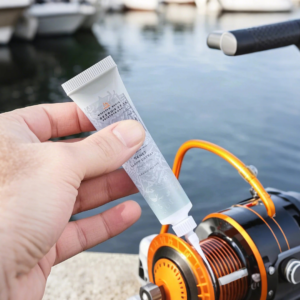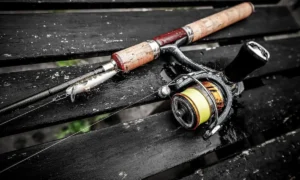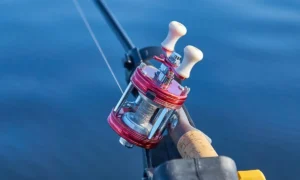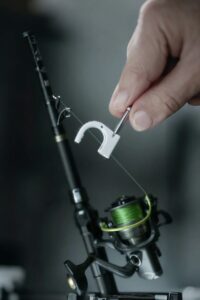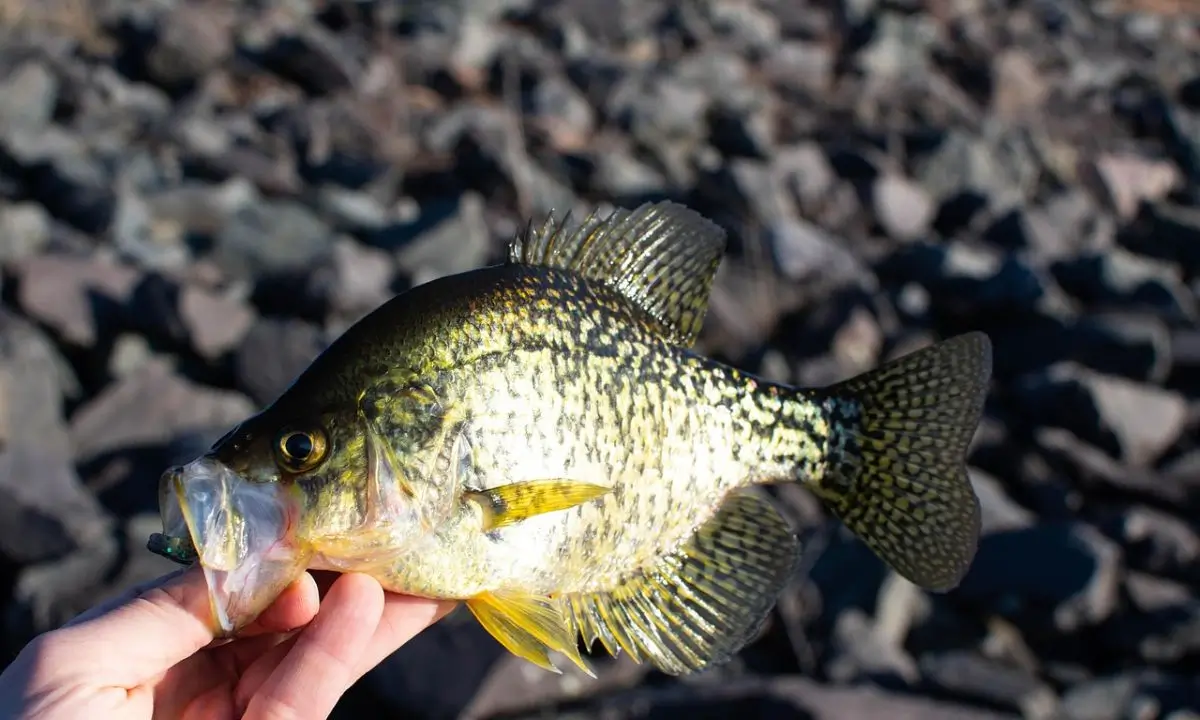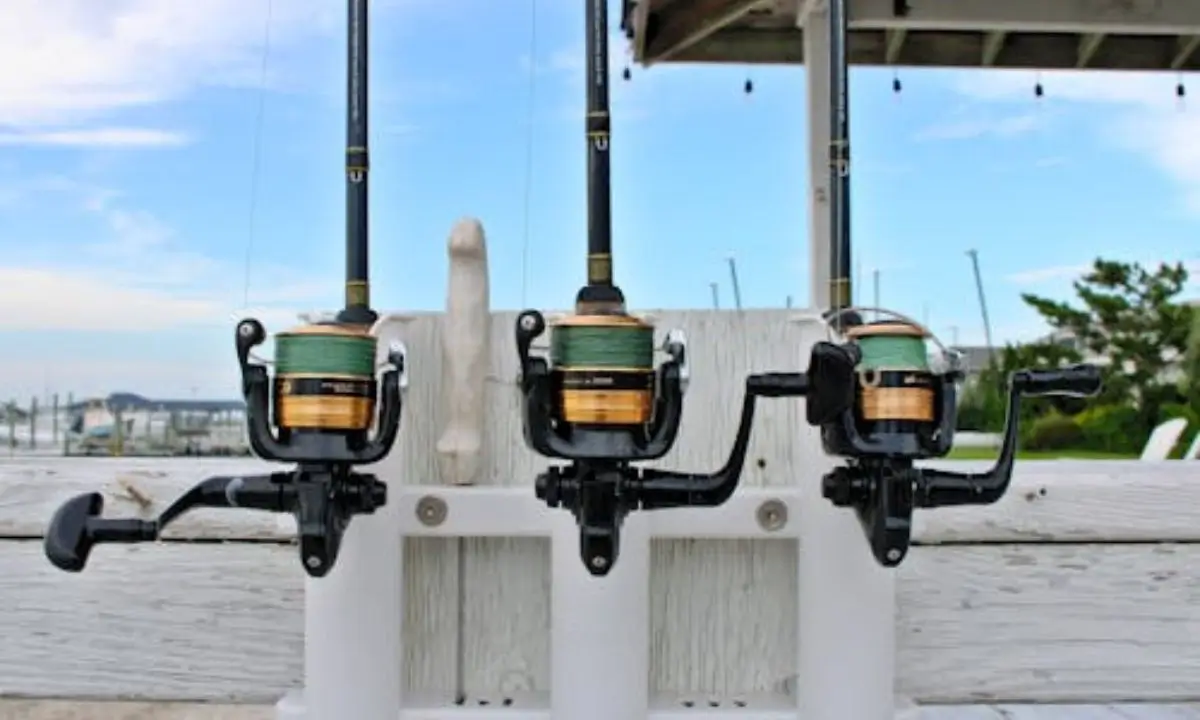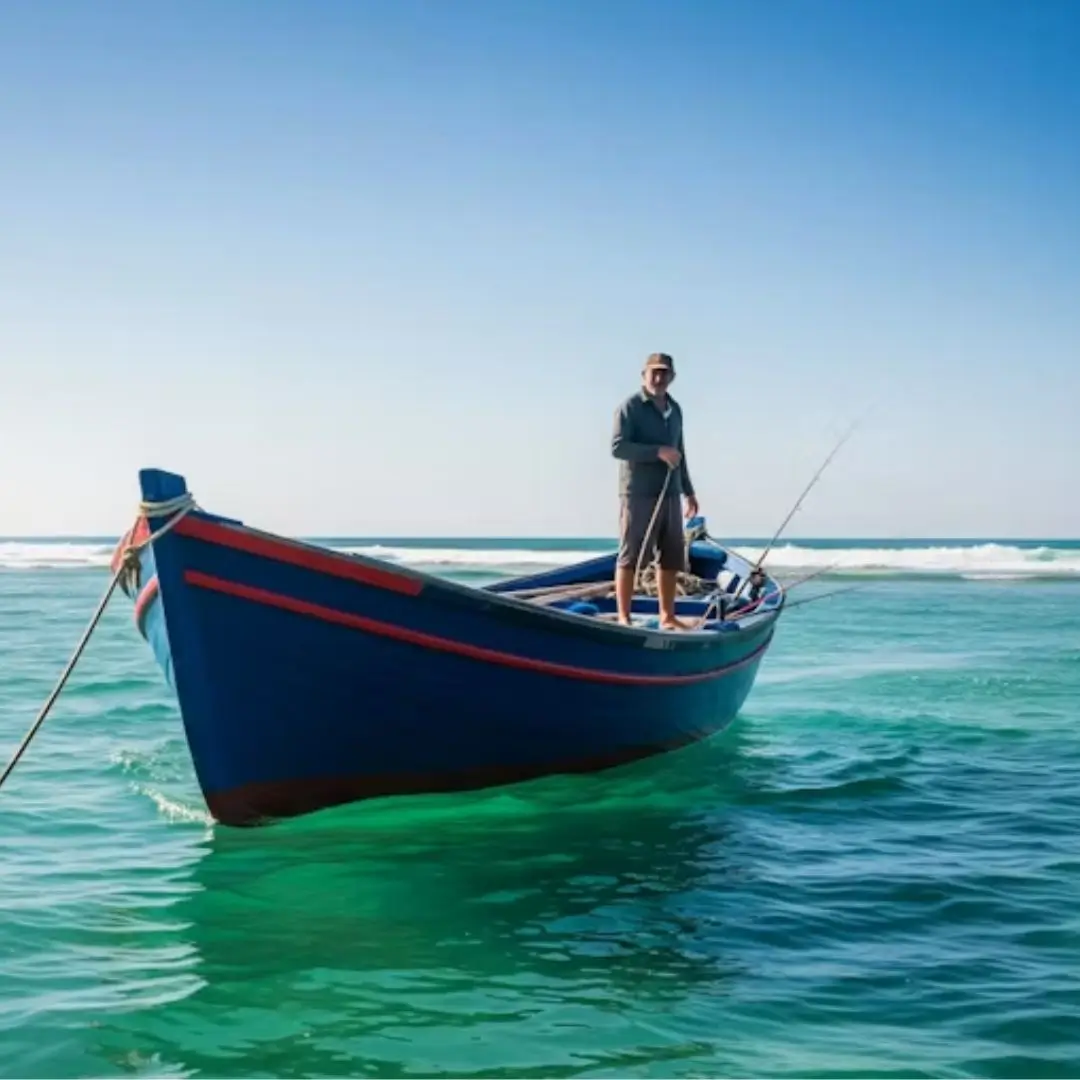🟦 Introduction:
What to grease fishing reel with? Learn pro tips, best greases, and maintenance hacks to keep your reel smooth in saltwater and freshwater use. In this complete guide, you’ll discover the best types of grease for both saltwater and freshwater fishing reels, step-by-step application methods, and the biggest mistakes to avoid. Learn how the right grease can protect your reel from rust, reduce friction, and improve your fishing experience.
A fishing reel is one of the most important tools for any angler, and just like any piece of equipment, it needs proper care to perform at its best. Over time, dirt, salt, and water exposure can cause reels to become stiff or even corrode, which directly affects casting smoothness and retrieval power. That’s why regular maintenance, especially applying the right grease, is essential. Greasing your reel not only keeps the gears running smoothly but also extends the life of the reel by protecting it against wear and rust.
Whether you’re a casual weekend fisherman or someone who spends hours on the water, knowing what to grease a fishing reel with and how to do it properly will help you avoid costly repairs and ensure a reliable fishing experience every time. details Big fish boat
What is Fishing Reel Grease?
Fishing reel grease is a special lubricant made to protect and maintain the moving parts of your reel. Unlike regular oils or household grease, this product is designed to handle water, salt, and friction that fishing reels face. It keeps gears smooth, reduces wear, and helps prevent rust or corrosion caused by saltwater and moisture. A good reel grease also extends the lifespan of your reel by ensuring all internal parts move properly without grinding or sticking.
Without the right grease, reels can become stiff, noisy, or even damaged over time. That’s why anglers always use dedicated fishing reel grease instead of general-purpose lubricants. By understanding what reel grease is and why it matters, you’ll know how to keep your reel performing like new every time you head out to fish.
Why Grease Matters More Than You Think:
Picture this: You’re reeling in a strong catch off the coast during peak season. All of a sudden, your spinning reel begins to make a grinding noise and feels heavier with every turn. That smooth drag you counted on is now a noisy, rusty mess. This usually happens when your reel’s internal parts are dry or packed with old, worn-out grease.
As a professional fisherman with over 5 years of saltwater and freshwater experience, I’ve seen how proper greasing can be the difference between a successful day on the water and a failed trip.
In this complete guide, we’ll cover: more details Clean a Spinning Reel
Why Greasing Your Fishing Reel Matters?
Greasing your fishing reel isn’t just about smoother casts — it’s about protecting your investment. Every reel has gears, bearings, and moving parts that face constant friction and exposure to water. Without proper grease, these parts can grind together, wear out quickly, or even rust, especially in saltwater conditions. Regular greasing keeps the reel quiet, smooth, and long-lasting. It also helps you avoid sudden breakdowns while fishing, which can cost you both time and catches.
Whether you fish in freshwater lakes or along the salty coast, the right grease creates a protective barrier against moisture and corrosion. Simply put, greasing your reel ensures reliable performance and extends its life.
spans, making every trip on the water more enjoyable and stress-free.
Types of Grease for Fishing Reels
Not all greases are created equal. For fishing reels, you need lubricants designed to withstand water, friction, and salt exposure. Lithium-based grease is popular for freshwater reels due to its smooth consistency and rust-preventing qualities. Marine-grade grease works best for saltwater reels, offering stronger corrosion resistance against harsh salty conditions. Some anglers prefer graphite-based grease for high-performance reels, as it reduces drag and keeps gears ultra-smooth.
Always avoid general-purpose greases or cooking oils—they can damage the reel and attract dirt. Choosing the right grease type ensures longer reel life, smoother casting, and better overall performance. Knowing the differences allows you to pick the best one for your fishing environment and reel type.
How to Apply Grease to Your Fishing Reel
Applying grease properly is crucial to keep your fishing reel running smoothly. Start by carefully disassembling your reel, keeping track of all small parts. Use a clean cloth to wipe off any old grease, dirt, or debris. Next, apply a thin layer of fresh fishing reel grease to gears, bearings, and other moving parts. Avoid over-greasing, as too much can attract dirt and cause drag issues. For spinning reels, focus on the main gear and handle assembly; for baitcasting reels, ensure the spool shaft and bearing
s get a light coating.
Once greased, reassemble your reel carefully, checking that all parts move freely. Regular maintenance like this not only prolongs your reel’s life but also ensures smooth, effortless casting and reeling every fishing trip. details Top Grease for Fishing Reels
Oily vs Grease – Which Parts of Your Fishing Reel Need What?
When it comes to maintaining your fishing reel, knowing where to apply oil and where to use grease can make all the difference in performance and longevity.
🎯 Use Oil For:
Oil is ideal for fast-moving, small components where reduced friction is essential.
✅ Recommended for:
-
Ball bearings
-
Handle knobs
-
Spool shafts
-
Level wind mechanisms
Oil penetrates tight spaces and keeps parts spinning freely, which is perfect for ensuring a smooth casting and retrieve experience.
🧰 Use Grease For:
Grease is best for larger, slow-moving parts that need protection from wear and water exposure.
✅ Recommended for:
-
Main gear & pinion gear
-
Drive gear teeth
-
Worm gear systems
-
Drag washers (if manufacturer-approved)
Grease stays in place longer and acts as a barrier against corrosion, especially in saltwater environments.
🧼 Pro Tip: Never over-apply either. Too much oil or grease can attract dirt and reduce performance instead of improving it.
Before greasing your reel, make sure it is thoroughly cleaned to avoid trapping dirt and debris.
- Exactly what to grease fishing reel with
- What grease is safe for saltwater reels
- Best grease brands (Shimano, Penn, etc.)
- Step-by-step reel greasing process
- What NOT to use (like regular car grease or WD-40)
We’ll also answer FAQs like:
- Can you use regular grease for fishing reels?
- What can I use to grease my fishing reel if I don’t have any reel grease?
Whether you’re new to fishing or have been casting for years, this guide is built to keep your gear smooth, protected, and long-lasting. 🎣
🟩 Why Greasing a Fishing Reel Is Important
If you’ve ever asked why we even need to grease reels—here’s why:
✅ 1. Protection Against Corrosion
Saltwater is brutal. It eats away at metal like acid. Without proper lubrication, internal reel components rust quickly. That’s why saltwater reels need salt-resistant, corrosion-blocking grease.
✅ 2. Smooth Operation
Nothing ruins a catch like a jammed gear or noisy drag. Applying the right grease keeps your gears running smoothly, preserving drag pressure and maintaining the reel’s balance.
✅ 3. Extends Reel Lifespan
I’ve seen reels last 2 seasons without grease and break down—versus 5+ years with regular maintenance. The difference? Consistent use of high-quality fishing reel grease and oil.
✅ 4. Prevents Wear & Tear
Friction wears down your reel’s moving parts over time. Grease creates a protective layer between metal parts, reducing friction and preventing wear or damage.
✅ Pro Tip: Reel maintenance isn’t just for pros. No matter if you fish just a couple of times a year or every weekend, keeping your gear greased is the smartest way to safeguard your equipment.
Common Mistakes to Avoid When Greasing Your Reel
Even experienced anglers can make errors when applying reel grease. One common mistake is over-greasing, which can attract dirt and debris, leading to sluggish performance. Another is using the wrong type of lubricant; household oils or general-purpose grease can damage gears and bearings. Forgetting to clean the reel before greasing is also risky, as old grease or grime can mix with fresh grease and reduce efficiency.
Some anglers skip greasing certain parts, like bearings or handle shafts, which can cause uneven wear. Lastly, neglecting regular maintenance schedules allows corrosion and friction to build up over time. By avoiding these mistakes, you’ll keep your reel in top condition, ensuring smoother casts, longer lifespan, and a better fishing experience.
Best Types of Grease for Saltwater and Freshwater Reels
Choosing the right grease is essential for protecting your fishing reel in different environments. For saltwater reels, use a marine-grade grease that resists corrosion, salt buildup, and high humidity. These greases are designed to keep gears smooth even in harsh ocean conditions. For freshwater reels, a high-quality lithium or synthetic grease works well, providing lubrication without attracting dirt or debris.
Some anglers prefer multi-purpose reel greases that perform adequately in both environments, but dedicated options usually offer better protection. Always check the manufacturer’s recommendations, as some reels require specific greases for optimal performance. Using the correct type ensures longer reel life, smoother operation, and fewer maintenance headaches during your fishing trips. Pass a Fishing Boat
Step-by-Step Greasing Instructions for Your Reel
Proper application of reel grease keeps your fishing gear running smoothly and extends its lifespan. Start by carefully disassembling your reel, keeping track of all parts. Clean each component using a soft cloth and a mild solvent to remove old grease, dirt, and salt deposits. Apply a thin, even layer of grease to the gears, bearings, and other moving parts—avoid over-greasing, which can attract debris. Reassemble the reel slowly, ensuring each part fits correctly and moves freely.
Finally, test your reel by turning the handle gently to confirm smooth operation. Following these steps consistently ensures your reel performs like new, prevents corrosion, and reduces friction, giving you a better fishing experience every time you head out on the water.
🟨 Types of Grease for Fishing Reels
Let’s break down the different types of greases you’ll come across—and which ones are worth your money.
✅ a. Manufacturer-Specific Grease
If you own a branded reel, always check what the manufacturer recommends. These greases are specially made for your reel’s internal design.
- Shimano Reel Grease
Designed for Shimano’s fine-toothed gearing system. It’s lightweight, non-toxic, and extremely corrosion-resistant.
→ Ideal for use on both freshwater and saltwater reels
- Penn Reel Grease
Thicker and tackier. Ideal for saltwater reels like Penn Battle or Slammer series.
→ Offers long-term protection even under harsh salt conditions. - Daiwa, Abu Garcia, Okuma
Each has its own brand of grease. If you can’t find those, use Penn Precision Grease as a universal fallback.
✅ b. Synthetic vs Petroleum-Based Grease
Synthetic Grease
✔ Long-lasting
✔ Designed for fishing reels
✔ Great for cold and hot temperatures
✔ Won’t break down like natural oils
Petroleum-Based Grease
✘ Breaks down faster
✘ May harm plastic parts inside the reel
✘ Can thicken in cold conditions
✅ My Choice: Synthetic grease every time. It’s smoother, lasts longer, and doesn’t harm internal parts. more info Fishing Rod
✅ c. Saltwater vs Freshwater Grease
Saltwater reels go through more abuse—so they need grease with corrosion inhibitors.
- Saltwater grease is thicker and more water-resistant
- Freshwater grease can be lighter and quicker to apply
How Often Should You Grease Your Reel?
Best Grease & Oil Brands for Fishing Reels (Trusted by Anglers)
Choosing the right brand of grease and oil is just as important as knowing where to apply them. Not all lubricants are made for the unique demands of a fishing reel — especially if you fish in saltwater. Here are some of the most trusted reel maintenance products used by professionals and hobby anglers alike.
🔧 Best Greases for Fishing Reels:
-
Yamalube Marine Grease
-
Known for its water resistance and long-lasting performance.
-
Excellent for saltwater use.
-
Ideal for gears and internal components.
-
-
Penn Reel Grease
-
Designed specifically for fishing reels.
-
Offers great protection against rust and corrosion.
-
Works best on gear teeth and drag systems.
-
-
Cal’s Universal Reel Grease
-
Safe on all drag systems including carbon fiber.
-
Ideal for both saltwater and freshwater reels.
-
Very smooth and temperature-resistant.
-
💧 Best Oils for Fishing Reels:
-
Ardent Reel Butter Oil
-
Ultra-refined for smooth action.
-
Reduces friction in ball bearings and spool shafts.
-
Great for both casting and spinning reels.
-
-
Quantum Hot Sauce Oil
-
Bright red color for easy application visibility.
-
Bonds to metal for long-lasting lubrication.
-
Recommended for high-speed bearings.
-
-
Lucas Oil Fishing Reel Oil
-
Trusted by professionals.
-
Works great for level wind systems and handle knobs.
-
Protects from rust and salt buildup.
-
🎣 Pro Tip: Stick to brands made specifically for reels. Never use automotive grease or household oils like WD-40 — these can break down internal parts over time.
Choosing the best reel grease can significantly affect your reel’s performance.
🟦 What to Avoid When Greasing a Fishing Reel
Not all lubricants are safe for fishing reels. Using the wrong product can damage internal components, strip gears, or cause sticky performance.
Here’s what to avoid:
❌ 1. WD-40
This is a penetrating oil, not a lubricant. It displaces water but evaporates quickly and leaves little protection behind. Even worse, it can break down the existing grease inside your reel.
“WD-40 is great for corrosion cleanup but not for internal lubrication.”
❌ 2. Automotive or Bearing Grease
Car grease is made for high-heat engines and thick metal components—not for small precision reel parts. It’s too heavy and often contains chemicals that may damage plastic or rubber seals.
❌ 3. Cooking Oil or Household Lubes (Vaseline, Olive Oil)
Over time, they can thicken, collect dirt, and harden inside your reel.. NEVER use them, even in an emergency.
❌ 4. Mixing Greases
Don’t mix different grease types (synthetic with petroleum). This can cause chemical separation or create a clumpy mess inside your reel.
🟩 Tools & Materials You’ll Need
Before you grease your reel, gather these tools to make the job smooth and clean:
✅ Essentials:
- Fishing Reel Grease (Shimano, Penn, Daiwa, etc.)
- Fishing Reel Oil for bearings and handle knobs
- Screwdrivers (small Phillips or flathead depending on reel model)
- Cotton swabs or Q-tips (for applying grease in tight spots)
- Microfiber cloth or shop towels
- Toothbrush (for scrubbing off old grease)
✅ Optional: Magnifying glass, tweezers, reel schematics from manufacturer
🟨 Step-by-Step: How to Properly Grease Your Fishing Reel more details Crappie Fishing Rod
Greasing your reel isn’t rocket science—but it does require patience and attention to detail. Follow these steps whether you have a spinning, bait caster, or trolling reel.
🔧 Step 1: Disassemble the Reel
- Unscrew the reel handle and side plate carefully.
- Keep the parts organized to avoid losing tiny components.
- Take photos during each step so you remember how to reassemble.
🧽 Step 2: Clean the Internal Parts
- Use a microfiber cloth or Q-tip to remove old grease, dirt, and debris.
- For sticky buildup, use a soft brush and rubbing alcohol or reel cleaner.
⚙️ Step 3: Apply Grease to Gears
- Lightly apply grease to the main drive gear, pinion gear, and oscillating gear.
- Use a small brush, toothpick, or Q-tip. Don’t over-grease!
✅ “Just enough to coat the surface—too much grease can slow down the reel.”
🛢 Step 4: Apply oil to the bearings and the handle knob.
- Drop 1–2 drops of reel oil (not grease) onto bearings, bail arm, and knobs.
- Oil is for parts that spin freely, while grease is for gears and pressure points.
🔩 Step 5: Reassemble and Test
- Carefully put all parts back in the correct order.
- Spin the handle and feel for smooth, quiet rotation.
- Wipe away excess grease around the seams.
⏱ How Often Should You Grease?
- Saltwater reels: every 2–3 months (or after every 3–4 trips)
- Freshwater reels: every 4–6 months
- Light greasing after off-season storage is also recommended
Common Greasing Mistakes to Avoid
Even experienced anglers can make errors that reduce the effectiveness of reel maintenance. One common mistake is over-greasing—too much lubricant can attract dirt and sand, causing more friction and wear. Another is using the wrong type of grease; household oils or general-purpose lubricants can damage your reel or fail in saltwater conditions. Skipping regular cleaning before greasing is also a major error, as trapped debris can grind down the gears.
Additionally, failing to lubricate small but critical parts like bearings or the drag system can reduce reel performance. By avoiding these mistakes and following proper greasing practices, you protect your fishing reel, improve casting and reeling smoothness, and extend the overall lifespan of your gear. details Gear Ratio Fishing Reels
🟦 Best Grease Brands for Fishing Reels (Reviewed)
Here’s a breakdown of the top-rated and widely trusted fishing reel greases:
🔵 1. Shimano Reel Grease
- Texture: Smooth, not too thick
- Best For: Spinning reels, fine gear systems
- Pros: Designed for high-speed gears
- Cons: Slightly pricey
- Rating: ★★★★★
🔵 2. Penn Precision Reel Grease
- Texture: Thick and tacky
- Best For: Saltwater reels like Penn Slammer, Battle III
- Pros: Excellent corrosion resistance
- Cons: Can slow down small reels if over-applied
- Rating: ★★★★☆
🔵 3. Cal’s Universal Reel Grease
- Texture: Medium-weight
- Best For: All-purpose, both saltwater & freshwater
- Pros: Doesn’t melt under heat
- Cons: Not brand-specific
- Rating: ★★★★☆
🔵 4. Ardent Reel Butter Grease
- Texture: Light and buttery
- Best For: Baitcasting and spinning reels
- Pros: Affordable and easy to apply
- Cons: Not ideal for harsh saltwater use
- Rating: ★★★★☆
✅ For a versatile, go-to option, Penn Grease + Reel Butter Oil combo works on 90% of reels.
How Often Should You Grease Your Reel?
🛠️ Section: Step-by-Step Guide – How to Grease Your Fishing Reel Properly
Keeping your reel smooth and long-lasting doesn’t require a full breakdown — just a simple, routine greasing process. Here’s a beginner-friendly, step-by-step guide to greasing your fishing reel the right way.
🔄 Step-by-Step Greasing Process:
✅ Step 1: Gather Your Tools
Before starting, make sure you have:
-
Reel grease (Penn, Yamalube, or Cal’s)
-
Small flat-head screwdriver
-
Cotton swabs or soft cloth
-
Tweezers (optional)
-
Paper towel or tray (to avoid mess)
✅ Step 2: Disassemble the Reel
Carefully remove the handle, spool, and side plate.
👉 Tip: Take photos at each step so you remember how to reassemble later.
✅ Step 3: Clean Old Grease & Dirt
Use a cotton swab or soft cloth to wipe away any old grease, sand, or dirt.
Avoid using water — especially on internal parts. If necessary, use isopropyl alcohol on a cloth.
✅ Step 4: Apply Grease to Key Parts
Use a small amount of grease on:
-
Main gear teeth
-
Pinion gear
-
Worm gear
-
Drag washers (only if manufacturer allows)
🧠 Remember: A light coat is enough. Over-greasing attracts dirt and slows performance.
✅ Step 5: Oil the Fast-Moving Parts
Use reel oil for:
-
Ball bearings
-
Handle knobs
-
Spool shaft
-
Level wind mechanism
A drop or two is usually enough. Too much oil can leak into areas where it’s not needed.
✅ Step 6: Reassemble the Reel
Put everything back together carefully. Rotate the handle gently to make sure everything feels smooth and responsive.
✅ Step 7: Wipe Down & Store
Wipe off any excess oil or grease from the outside. Store your reel in a dry, cool place — ideally in a reel bag or case. { profishingbyjihad}
Best Reel Grease Types for Saltwater and Freshwater
Choosing the right grease is crucial for keeping your fishing reel in top condition. For saltwater reels, use a marine-grade grease that resists corrosion and can withstand high humidity and salt exposure. These greases protect gears and bearings from rust while maintaining smooth performance. For freshwater reels, a lighter, multipurpose reel grease works well, providing smooth operation without attracting excess dirt.
Synthetic greases are often preferred because they perform consistently across temperatures and don’t break down easily. Always avoid household lubricants, as they may damage seals or fail under water exposure. Using the correct grease type ensures that your reel stays reliable, extends its lifespan, and provides smooth, effortless reeling during every fishing trip.
🎣 Maintenance Frequency:
-
Light Use (Freshwater): Every 2–3 months
-
Heavy Use (Saltwater): Every 3–4 weeks or after each trip
-
After Rain or Sand Exposure: Clean and re-lube immediately
Proper greasing is like giving your reel a tune-up. Do it regularly, and your gear will perform better, cast farther, and last for years to come.
🟩 Emergency Grease Alternatives
Sometimes you’re out fishing and realize you forgot your reel grease. Don’t panic—there are a few temporary solutions you can use until you get home.
1. Petroleum Jelly (e.g., Vaseline)
- Pros: Easy to find, water-resistant
- Cons: Attracts dust and dirt quickly
- Use: Very short-term. Clean off as soon as possible and re-grease with proper reel grease.
2. Gun Grease
- Pros: Better than automotive grease, designed for small metal components
- Cons: Not always water-resistant
- Use: Works in emergencies, but not ideal for saltwater fishing
3. Silicone Grease or Spray
- Pros: Water-resistant, smooth application
- Cons: Thin texture—may not last long on gears
- Use: Can be used for quick fixes, especially on spinning reels
4. Graphite Grease
- Pros: Slick, high-temperature resistance
- Cons: Can stain and isn’t ideal for plastic parts
- Use: Suitable only for metal-heavy bait casters
⚠️ Important: These are emergency-only solutions. Always clean and apply proper reel grease when you’re back at home.
🟨 Final Thoughts & Quick Reel Maintenance Checklist
A smooth, clean, and well-greased reel doesn’t just make your day on the water better—it extends the life of your expensive gear and improves your catch rate.
Take care of your reel like you do your boat or rod. A few minutes of maintenance saves hundreds in repairs.
Conclusion & Final Tips
What to Grease Fishing Reel With Properly greasing your fishing reel is more than just maintenance—it’s about protecting your investment and ensuring smooth, enjoyable fishing experiences. By using the right type of grease for saltwater or freshwater reels, following step-by-step application methods, and avoiding common mistakes, you can prevent rust, reduce friction, and extend the life of your reel.
Regular maintenance keeps your gear performing like new, so you can focus on the fun of fishing rather than worrying about equipment failure. Remember, a well-lubricated reel not only improves performance but also provides confidence when battling big catches. Take the time to clean, grease, and inspect your reel regularly—it’s a small effort that pays off in countless successful and stress-free fishing trips.
Have you tried these tips? Share your thoughts in the comments below—I’m ready to answer your questions!
✅ Quick Reel Maintenance Checklist:
| Task | Frequency |
| Light Cleaning | After every trip |
| Deep Greasing | Every 2–3 months |
| Replacing Grease/Oil | Every season |
| Inspect for Rust/Wear | Monthly |
| Avoid Over-greasing | Always |
| Never Use Car Oils | Always |
What should I grease my fishing reel with?
Use fishing reel-specific grease designed for saltwater or freshwater conditions. Avoid automotive or household greases, as they can damage sensitive components.
How often should I grease my fishing reel?
For saltwater reels, grease every 2–3 months. For freshwater reels, every 4–6 months. Additionally, grease after heavy use or long-term storage.
Is reel grease different from regular grease?
Yes, reel grease is specially formulated to withstand moisture, salt, and friction in fishing environments. Regular automotive or household grease can damage sensitive reel components over time.
Can I mix different brands of reel grease?
It’s not recommended to mix different brands of reel grease, as the chemical compositions may not be compatible and could affect the reel’s performance or cause gumming.
What should I avoid when greasing my fishing reel?
Avoid over-greasing, using low-quality or non-reel-specific grease, and applying grease to parts that require oil instead—like the line roller and bearings. Always refer to your reel’s manual.
Do I need to grease both spinning and baitcasting reels?
Yes, both spinning and baitcasting reels require grease for gears and metal contacts. However, the application process and areas to grease may slightly differ based on reel type.



